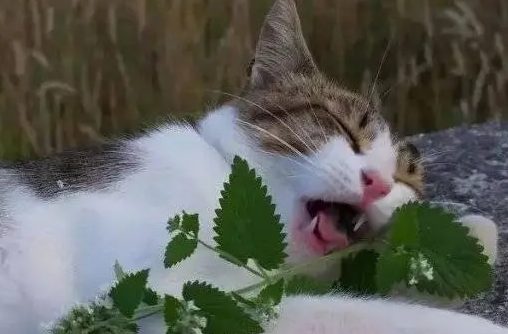Cats are “madly in love” with catnip, and as soon as they get close to catnip, they will immediately “up” – they will rub their bodies, roll around, lick and chew… It is generally believed that this plant, like silver vine, Has intoxicating properties for cats, but that may not be the only reason cats love catnip so much. Japanese researchers found that when cats destroyed catnip, the amount of strong repellant released was much higher, suggesting that cats’ behavior protects them from pests. The research was published on the 14th in iScience, a journal under the Cell Publishing Group.
The leaves of catnip and silver vine contain the compound nepetalactone, an iridoid compound that protects the plant from pests.
The researchers found that physical damage to silver vines by cats promoted an immediate release of the compound 10 times higher than in intact leaves. In addition, leaf damage also changed the iridoid composition in silver vine. Nepetalactone accounted for more than 90% of all iridoids in intact leaves, but decreased to about 45% in damaged leaves, while other iridoids were greatly increased.
In previous studies, study lead author Masao Miyazaki, an animal behavior researcher at Iwate University in Japan, and his team demonstrated that these compounds are effective in repelling Aedes albopictus. This time, the team demonstrated that the repellent properties were more effective when cats destroyed plants by rubbing, rolling, licking and chewing. The diversity of iridoids in damaged silver vine leaves enables enhanced mosquito repellency at low concentrations.
To test whether cats responded specifically to these compounds, the researchers fed the cats a diet containing pure nepetalactone. Aside from chewing, cats respond to iridoid mixtures in the same way as natural plants, Miyazaki says. They lick the chemicals off the plastic plates, then rub and tumble over them. “This means that licking and chewing is an instinctive behavior caused by olfactory stimulation of iridoids,” Miyazaki said.
